Burnby Hall – A House Through Time
What we now know as Burnby Hall was originally built by a member of the Powell family of solicitors and shopkeepers.
William Powell owned a drapers and grocers shop in Market Street, Pocklington situated where Costa Coffee is now. In 1866 he was wealthy enough to build a large house next door to the vicarage, just off the Balk. The Elms was built on the site of an earlier property that was the last building on the southern edge of the town overlooking farm fields. It was alongside The Balk, which gets its name from the track leading out onto Pocklington’s common, with the area dissected by the railway when it was built in 1847.
The railway line ran close to the house with a level crossing just outside the gates, the line then ran up across what is now the main car park for Burnby Hall Gardens and on through Primrose Woods.
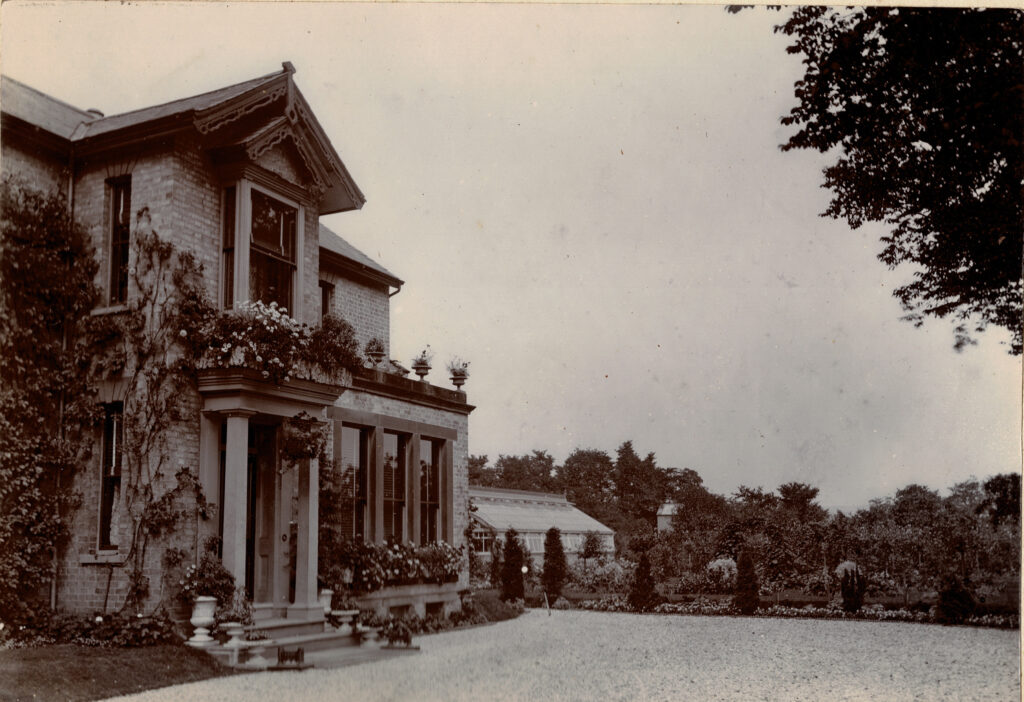
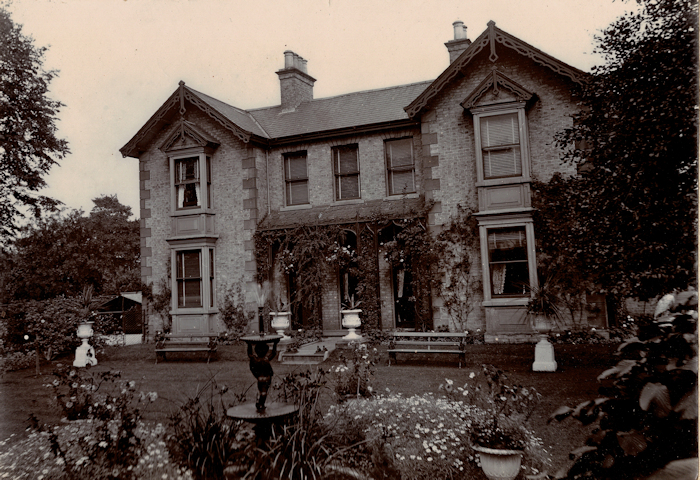
The main entrance to the house was where the current entrance is, however the house also had a beautiful side elevation that faced on to the Balk, with large gardens incorporating formal plantings and a fountain. The top floor of the side elevation can still be seen above what is now the Community Hall
On William Powell’s death, the house passed to his nephew, also William Powell. William Powell, the nephew, was also a wealthy man, he had developed Yorkshire Relish from a Market Weighton recipe. He had a huge factory in Leeds, making Yorkshire Relish which became the best-selling brown sauce in the world, selling approximately 13 million bottles a year towards the end of the first world war. In the 1880s he owned a town house in the middle of Leeds, a larger house in the countryside just outside Leeds and The Elms, in Pocklington.
Percy Stewart came from a titled family, but a branch with little money, his great grandfather was the Earl of Galloway and one of his cousins was Winston Churchill, however he didn’t inherit any of the family wealth. His father was a Cambridge vicar. Percy Stewart was one of nine children. He went to private school and then onto Cambridge where he studied Simetic Languages and Theology. Instead of going into the church, he was offered a position in 1895 teaching Hebrew at Pocklington school.
Katharine Stewart came from an industrial family in the North East of England, with what was considered new money. Her family, the Priestman family, were Quakers and wealthy mine owners, owning mines in Durham, Northumbria and Cumbria. At their height they owned 17 mines, 2 coke fired power stations and iron works and employed about 20,000 men.
Percy Stewart and Katharine first met in East Yorkshire, whilst fox hunting. He was teaching at Pocklington School and Katharine (then Bridges) had been widowed in 1896, her previous husband having been vicar of Goodmanham. In 1901 they married and rented The Elms from Mr Powell’s estate, they bought the house in 1904 changing its name to Ivy Hall.
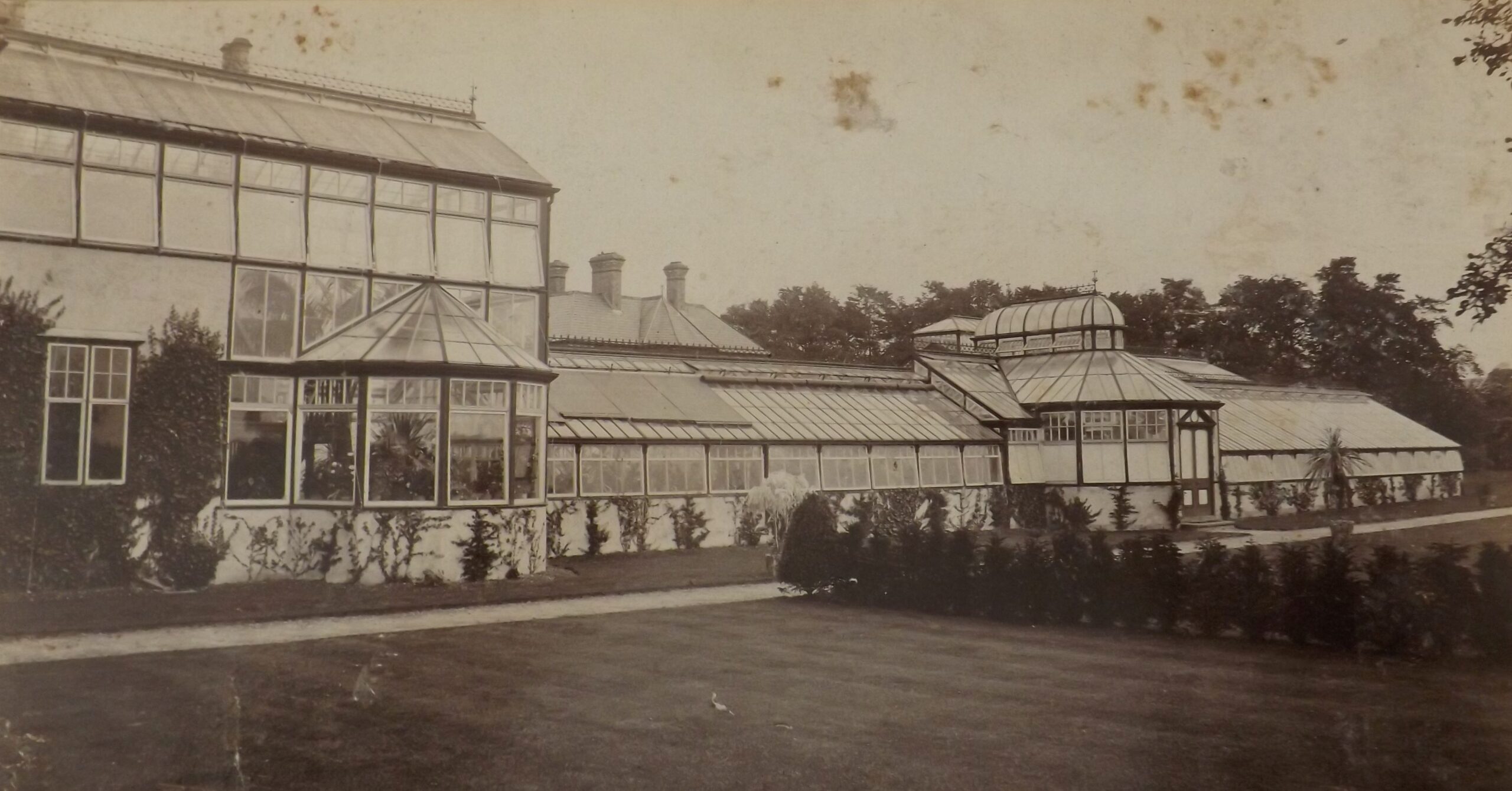
One of the earliest additions were the extensive glass houses which were built to the rear of the Hall, in which the Stewarts grew exotic fruits. They brought in a local builder, Joseph Allison to build the lakes (primarily so that Percy Stewart could fish in them) to the front of the hall. The lake and gardens were not open to the public, they were their private pleasure gardens.
Between 1906 to 1926 Major and Mrs Stewart travelled the world. When they returned to England they decided that they would make further improvements, altering the frontage of the hall to how it looks today.
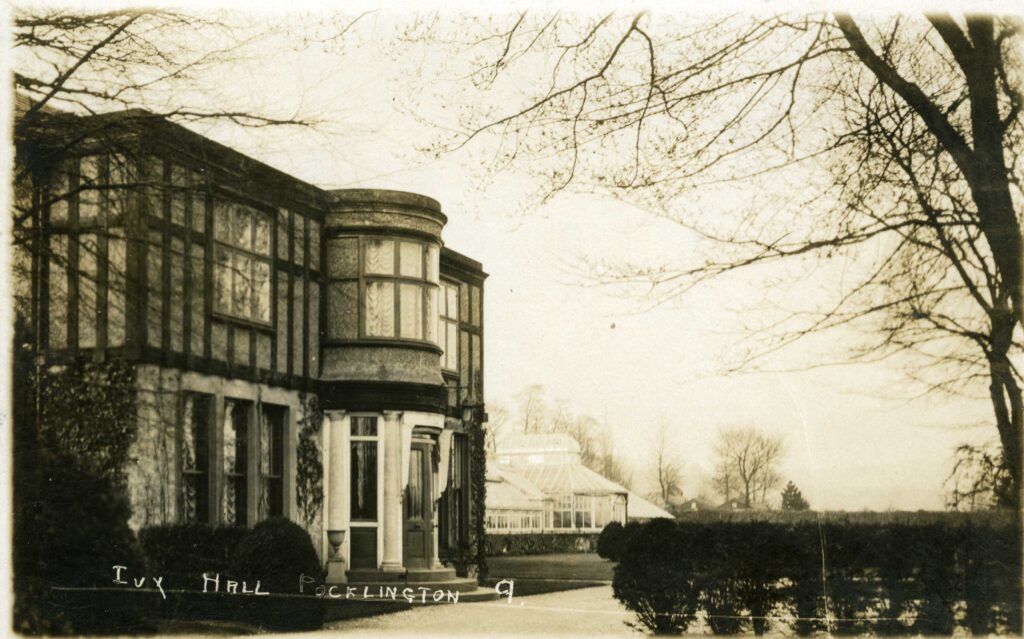
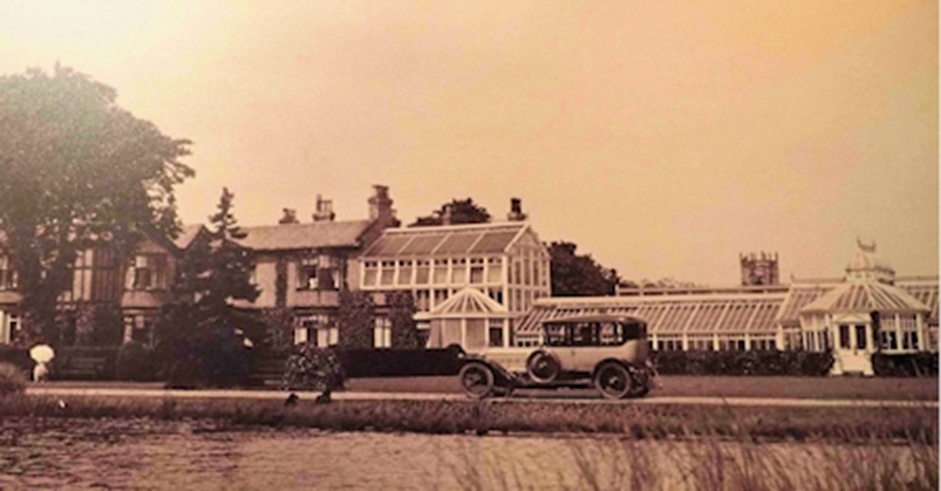
Major Stewart was very keen on shooting and fishing and between 1916 and 1919 bought up large tracts of farmland over towards Burnby and Hayton to build up an estate, eventually owning about 3000 acres of land. He bought what was originally the brick works along Burnby Lane and turned the clay pits into the ponds at Willow Waters that are still there today. He used monies from a trust fund that came in annually from Katharine’s family coal mines but also took out mortgages to grow the estate.
Major Stewart laid a road surface to the estate from Burnby Lane along what is now the main path down through the gardens. This road, with a lodge at the entrance gave easier access to his lands at Burnby and Hayton. In the 1920s Major Stewart changed the name of the house again, to Burnby Hall.
After miner’s strikes in the early 1920s, a fall in the demand for coal and a General Strike in 1926 the income from Mrs Stewart’s family trust started to dry up. In 1927 they decided to try to sell the hall and estate and move to America, but they were unable to sell for a reasonable price, given the economic climate at the time and the fall in land values between the two World Wars. They remained at Burnby Hall and although the trust fund monies had started to dry up, they were able to live a comfortable life at the hall. They travelled less and sold parts of the estate off slowly over time.
In 1939, shortly before the outbreak of the second world war, Mrs Stewart died, During the war, Major Stewart felt that he did not require as much room for himself and his staff and the hall was split into four flats, three of which were let out to Officers based close to the town.
After the war, the house was described as having, on the first floor, a large drawing room, which was formerly a ballroom and later became the council chambers for Pocklington Rural District Council. There were also four bedrooms and two bathrooms. Downstairs there was a lounge, a dining room, a smoking room and a suite of bedroom, bathroom and dressing room. There were also kitchens, pantries and a servant’s wing with four bedrooms. There were also cellars below the main building.
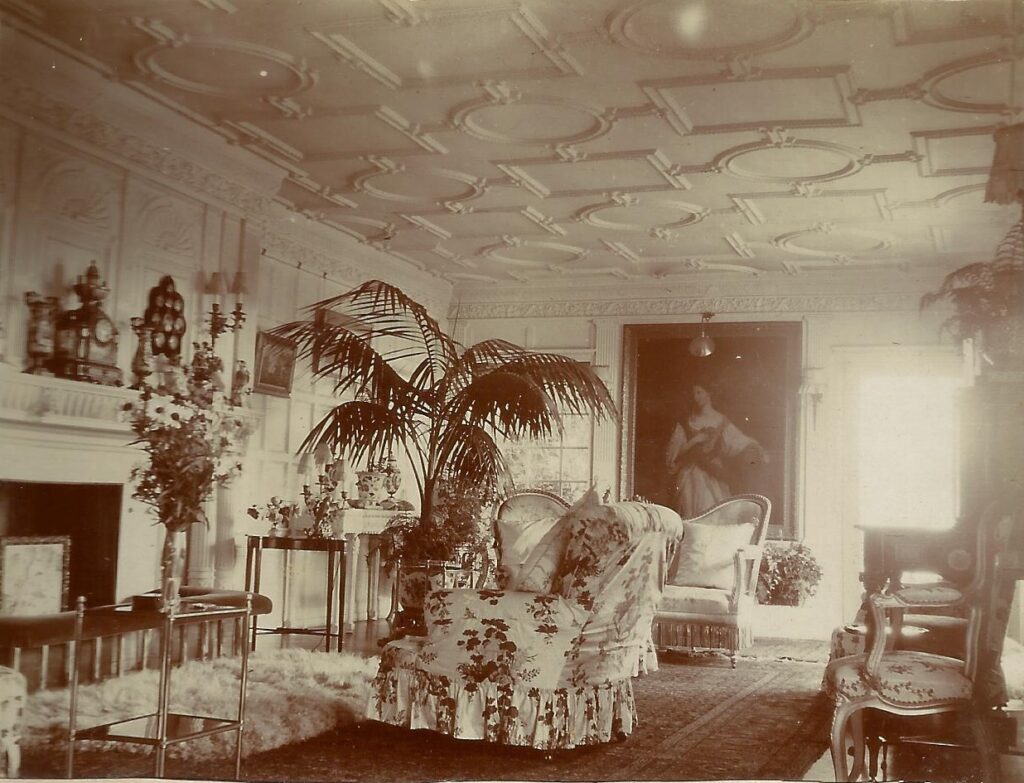
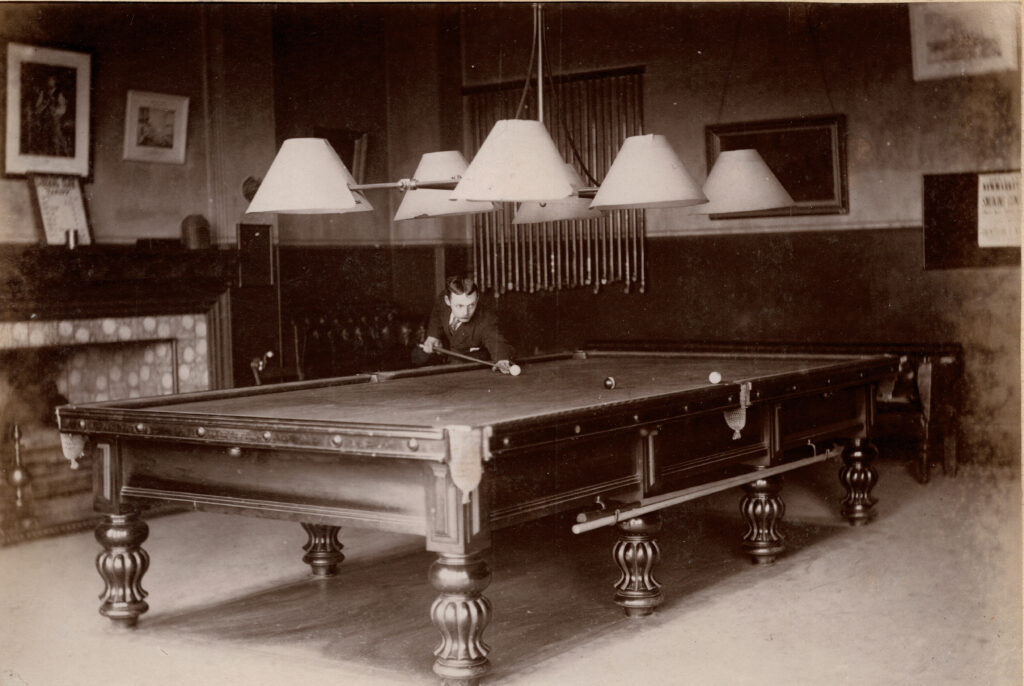
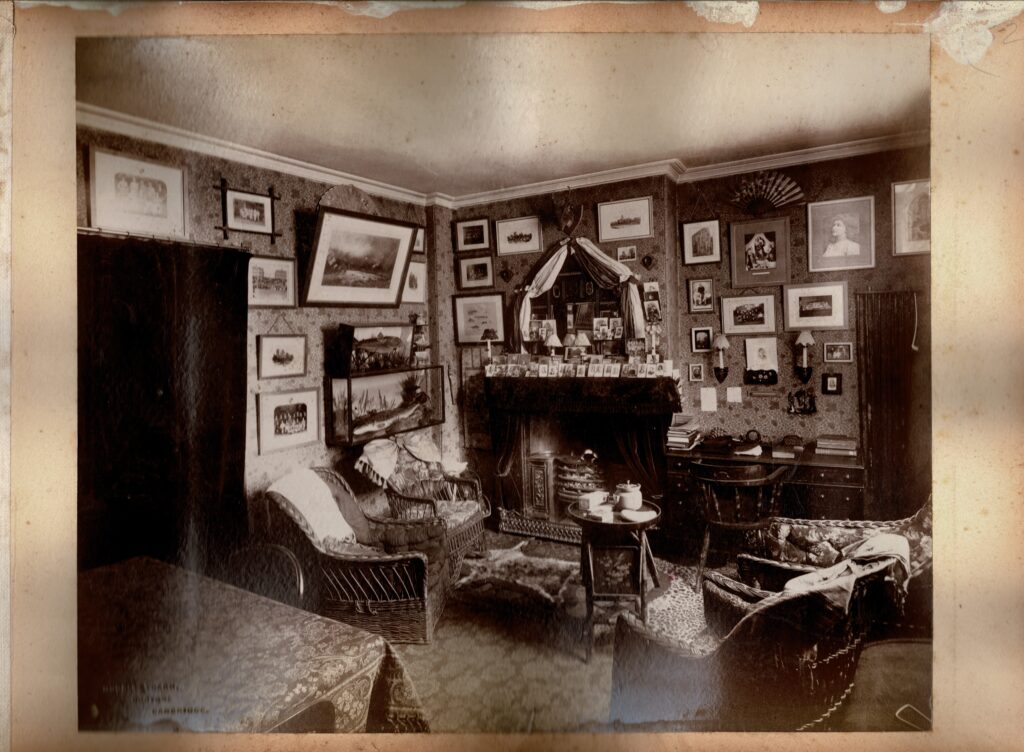
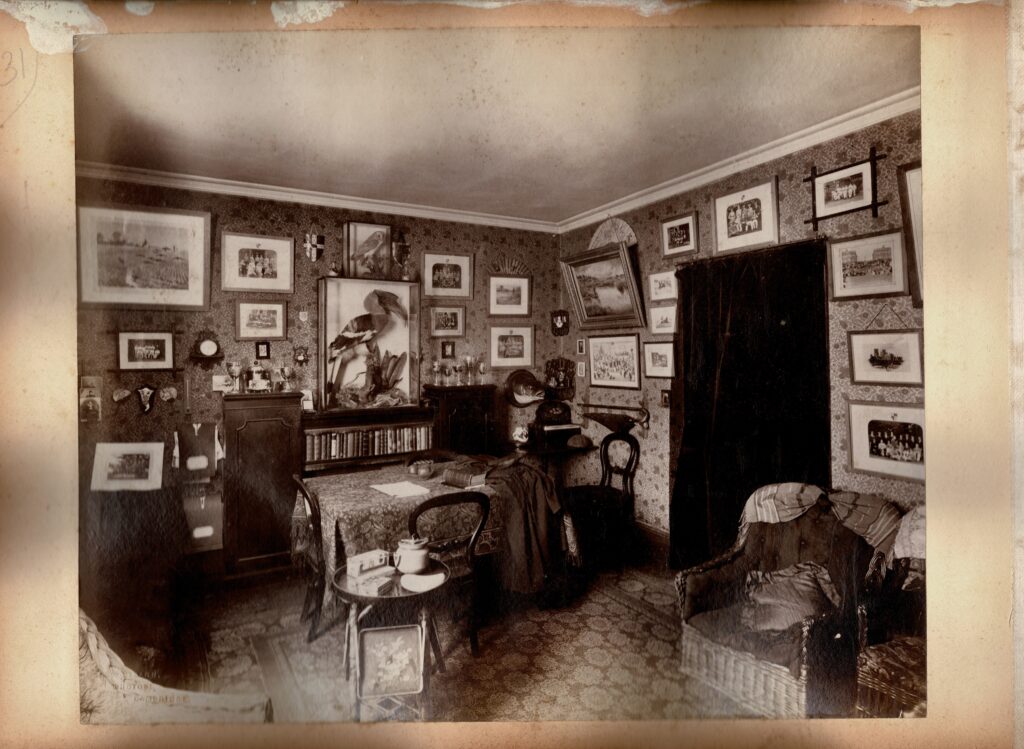
There are few pictures of the interiors of Burnby Hall, however the above pictures have recently been made available to Pocklington District Heritage Trust, who have kindly given permission for us to use them on our website.
When Major Stewart died in 1962, his estate totalled £68,433 (approximately £1.250,000 in today’s money). The Stewarts had decided early on, that, as they had no children, the hall and gardens were to be left in trust for the benefit of the people of Pocklington, they did not however make any arrangements for the ongoing funding of maintenance or development. The hall and gardens were initially offered to the National Trust after the Major’s death, but they declined it. The ‘Stewarts Trust’ was established in 1964 to ensure that the Gardens and Museum Collection were maintained and preserved for future generations to enjoy. When the Stewarts Trust sold the Hall off in the 1965, it was bought by the Pocklington Rural District Council for £10,500, the equivalent of £175000 today.
On the Conveyance documents and map, of 1965, the huge glass houses are not shown. At some point they were either taken down, or possibly burnt down, leaving only what is known as the conservatory today. Burnby Hall became the council offices for the Pocklington Rural District Council and an extension was added in the 1960s to be used as the council chambers, this part of the building is now the Community Hall.
In 1974, the Pocklington Rural District Council was absorbed by East Yorkshire Borough Council and then North Wolds Borough Council, eventually ending in the hands of East Riding of Yorkshire Council (ERYC) in 1996. Since then the Hall has been considerably altered inside and used as a Registry Office and other council offices.
An update on the Hall…
In 2019 Burnby Hall was considered surplus to requirements by (ERYC). It was initially offered back to the Stewarts Trust in a Community Asset Transfer, but the Trust decided not to proceed with the transfer.
In May 2023 ERYC offered to return Burnby Hall and the adjoining community hall, through a Community Asset Transfer to Pocklington Town Council (PTC) at nominal cost. The transfer was on the condition that PTC could demonstrate a financially viable community use for Burnby Hall that was sustainable in the long term. If the Community Asset Transfer did not proceed, the property would potentially be sold for commercial redevelopment, resulting in the loss of the existing Community Hall.
In April 2024 East Riding of Yorkshire Council’s Cabinet agreed to offer a 125-year lease of Burnby Hall in Pocklington to Pocklington Town Council at a peppercorn rent.
Councillor Anne Handley, leader of East Riding of Yorkshire Council, said: “I am delighted that we have today agreed this transfer of a much-loved feature of Pocklington to Pocklington Town Council. This will be an excellent solution to secure the future of Burnby Hall and opens up some wonderful possibilities for its future use, and for the local community.”
On 11th September 2024 ERYC and PTC agreed the Heads of Terms for a 125 year lease on Burnby Hall. ERYC have now vacated the premises. To allow the Community Hall to remain open, PTC have been granted a licence by ERYC to operate the Community Hall from the 1st October 2024, whilst the detailed lease agreement is drawn up. Once the lease agreement is concluded, control of Burnby Hall will pass to PTC. The Town Council will then issue a lease to Pocklington Community Trust to operate the building on behalf of the residents of Pocklington
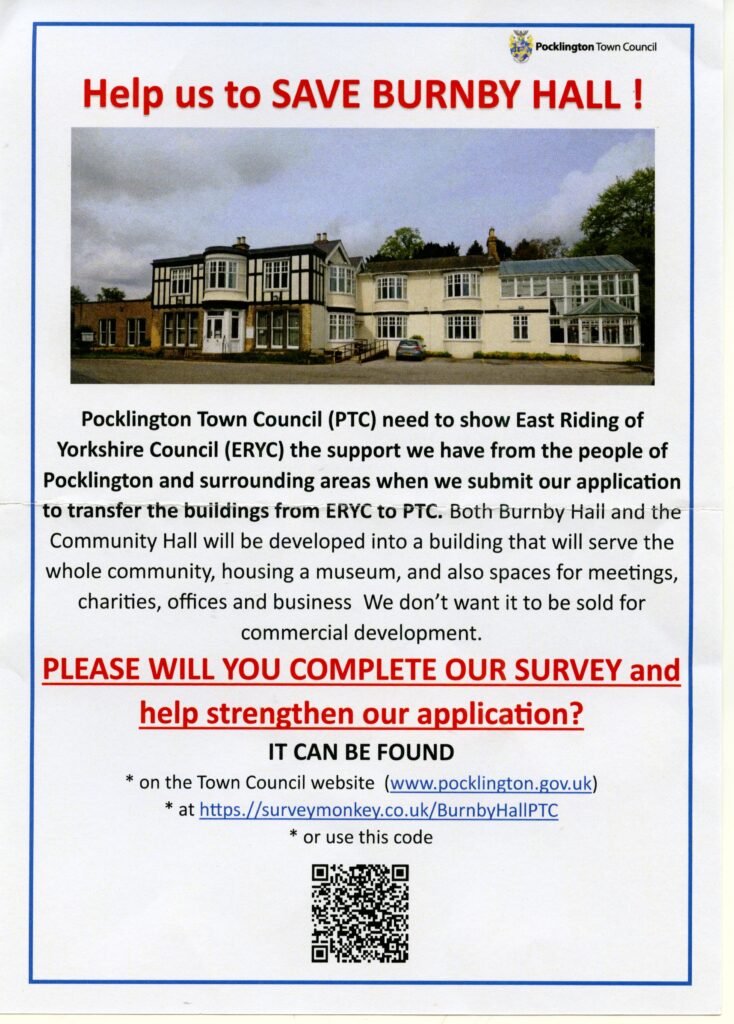
With thanks to Pocklington District Heritage Trust for their kind permission to use these wonderful archive photographs and their help in creating this article for our website. With special thanks to Phil Gilbank – THANKS PHIL
We have started to build a collection of photographs of the hall through the years but would love to include any personal or official pictures you may have,
If you come across any early images of either the interior or the exterior of Burnby Hall, please contact us at [email protected]
